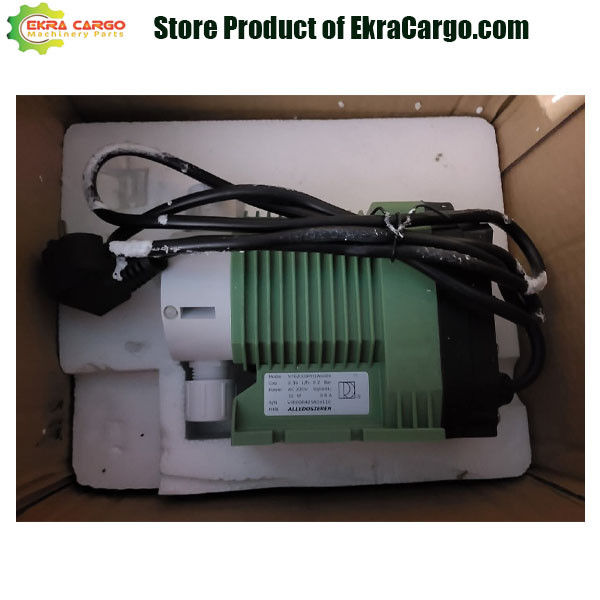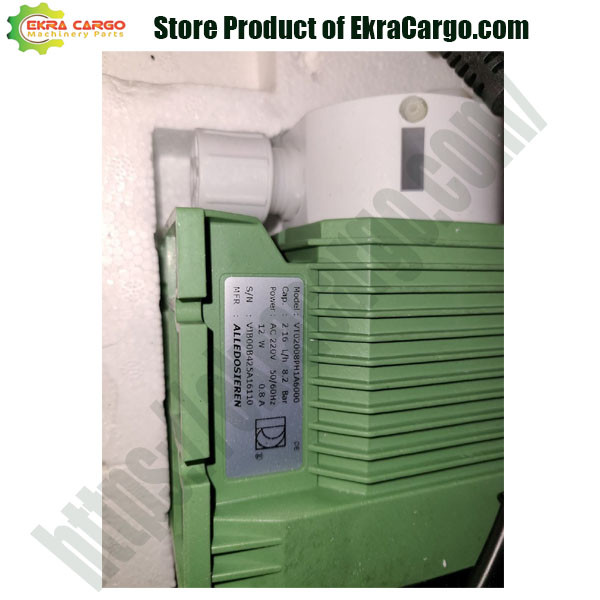
The Ultimate Guide to Chemical Dosing Pumps: Types, Benefits, and Buying Tips | Best Rates | Buying Guide | Detailed Tips | Maintenance | FAQ |
The Ultimate Guide to Chemical Dosing Pumps: Types, Benefits, and Buying Tips
Introduction
Chemical dosing pumps play a crucial role in
industries like water treatment, agriculture, pharmaceuticals, and
manufacturing. These pumps ensure precise chemical injection for disinfection,
pH control, and other processes.
If you're looking for the best chemical dosing pump, this guide covers everything—types, key features, top product recommendations, and a buying guide to help you make an informed decision.

Check the product at Ekra Cargo
What is a Chemical Dosing Pump?
A chemical dosing pump (or metering pump) is a device designed to inject precise
amounts of chemicals into water, gas, or steam systems. These pumps are used
in:
·
Water treatment
plants (chlorine, fluoride dosing)
·
Industrial processes (cooling towers, boilers)
·
Agriculture (fertilizer injection)
·
Oil & gas (corrosion inhibitors)
Types of Chemical Dosing Pumps
1. Diaphragm Dosing Pumps
Pros:
✔
Highly accurate
✔
Handles corrosive chemicals
✔
Low maintenance
Cons:
✖
Expensive compared to peristaltic pumps
✖
Diaphragm wear over time
Best For: Water treatment, industrial applications
2. Peristaltic Dosing Pumps
Pros:
✔
No contamination risk (chemicals only touch tubing)
✔
Easy maintenance (replace tubing only)
✔
Self-priming
Cons:
✖
Tubing wears out and needs replacement
✖
Lower pressure handling
Best For: Laboratories, food processing
3. Piston Dosing Pumps
Pros:
✔
High-pressure handling
✔
Long lifespan
✔
Precise flow control
Cons:
✖
Requires regular maintenance
✖
Not ideal for viscous fluids
Best For: High-pressure industrial applications
4. Solenoid Dosing Pumps
Pros:
✔
Affordable
✔
Compact design
✔
Good for low-flow applications
Cons:
✖
Limited to low-pressure uses
✖
Less accurate than diaphragm pumps
Best For: Small-scale water treatment, aquariums
Top 5 Chemical Dosing Pumps – Product
Recommendations
1. Blue-White Industries FLEXFLO Chemical Metering
Pump
✅ Pros:
·
Adjustable flow rate
·
Corrosion-resistant
·
Easy calibration
❌ Cons:
·
Slightly noisy
·
Not ideal for high viscosity
Best For: Water treatment, pools
2. Grundfos Dosing Pump (DME Series)
✅ Pros:
·
High precision
·
Digital control
·
Durable construction
❌ Cons:
·
Expensive
·
Complex installation
Best For: Industrial & municipal water treatment
3. SEKO Chemical Dosing Pump (Dosatron Series)
✅ Pros:
·
No electricity needed (water-powered)
·
Easy to install
·
Reliable for agriculture
❌ Cons:
·
Limited to low-pressure applications
Best For: Fertilizer injection, hydroponics
4. Prominent Gamma/X Dose Pump
✅ Pros:
·
Smart digital control
·
Multiple chemical compatibility
·
High accuracy
❌ Cons:
·
High initial cost
Best For: Industrial & commercial use
5. Iwaki Magnetic Drive Pump
✅ Pros:
·
Leak-proof design
·
Handles aggressive chemicals
·
Low maintenance
❌ Cons:
·
Not suitable for high solids
Best For: Chemical processing, labs
Buying Guide – How to Choose the Best Chemical
Dosing Pump
1. Flow Rate & Accuracy
·
Low-flow applications (1-10 GPH) → Solenoid or
peristaltic pumps
·
High-flow applications (10-100+ GPH) → Diaphragm or
piston pumps
2. Chemical Compatibility
·
Check if the pump material (PVC, PTFE, stainless
steel) resists your chemicals.
3. Pressure Requirements
·
Low pressure (e.g., aquariums) →
Peristaltic/solenoid pumps
·
High pressure (industrial) → Diaphragm/piston pumps
4. Power Source
·
Electric (most common)
·
Water-powered (e.g., Dosatron for agriculture)
5. Maintenance Needs
·
Diaphragm pumps → Periodic diaphragm replacement
·
Peristaltic pumps → Tube replacement
Why You Should Invest in a Quality Chemical Dosing
Pump
✔ Precision – Avoid under/over-dosing chemicals
✔ Cost Savings – Reduces
chemical waste
✔ Safety – Prevents
leaks and contamination
✔ Longevity – Durable
pumps last years
Check product at Ekra Cargo
Final Thoughts
Choosing the right chemical dosing pump depends on your application, flow rate, and chemical type.
Whether you need a peristaltic pump for
labs or a diaphragm pump for industrial use, this guide helps you make the best choice.
Looking for a reliable dosing
pump? Check out our top-rated models here! (Insert
product link or CTA)
FAQs
Q: How often should I replace
dosing pump parts?
A: Diaphragms every 6-12 months, tubing every 3-6 months (depending on usage).
Q: Can I use one pump for
multiple chemicals?
A: Only if thoroughly cleaned between uses to avoid reactions.
Q: What’s the lifespan of a
chemical dosing pump?
A: 5-10 years with proper maintenance.
